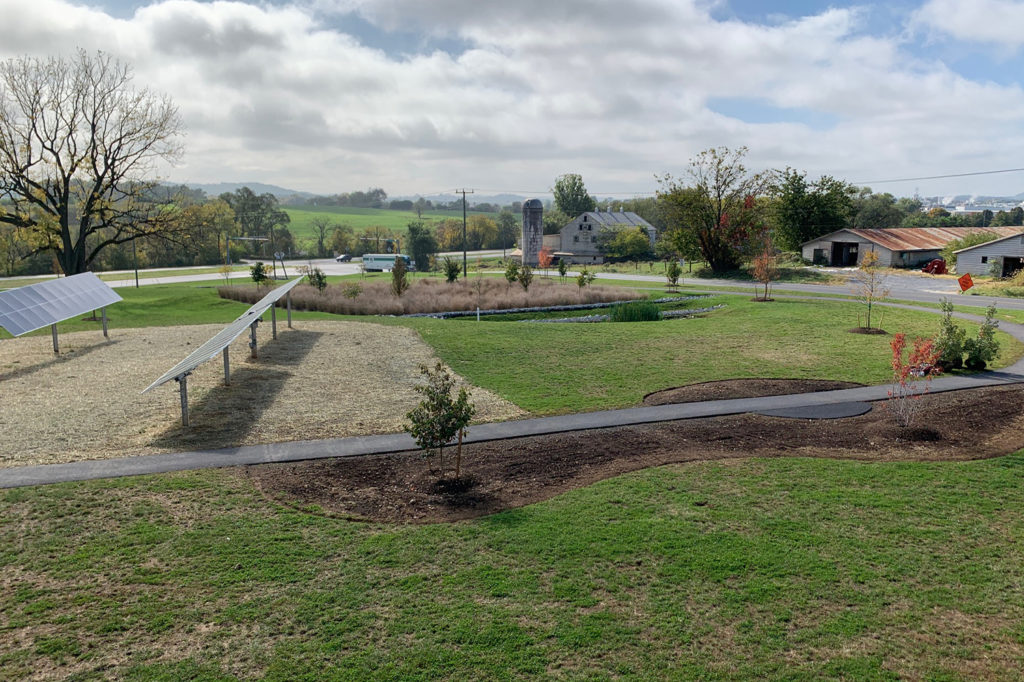
Situated on almost 20 acres of land in Virginia’s Rockingham County, Shenandoah Valley Electric Cooperative’s new headquarters has more amenities than its former site, including a drive-thru member service kiosk, a track for employees and solar panels.
And eventually, a unique arboretum with educational and environmental benefits will grace the grounds, thanks to a project spearheaded by Scott Sorrels, the co-op’s vegetation management supervisor.
“The arboretum will show how the cooperative is committed to caring for the environment,” said Sorrels, who’s also the Rockingham-based co-op’s arborist. “It will have a lasting impact on the valley as a showcase of renewable resources. We can’t wait to have people stop by to learn more.”
Initially, Sorrels envisioned the arboretum as strictly a lush, leafy enclave. But after researching a Virginia Tech program that promotes utility-friendly trees, he settled on the idea of the three-in-one arboretum, which will showcase renewable energy, pollinator habitat and small trees designed not to interfere with power lines. He pitched the plan to Greg Rogers, the co-op’s president and CEO.
Leadership approved the idea, “as long as it didn’t cost the members anything,” he said.
Sorrels is already making good on his promise of keeping it low- or no-cost. He has pulled together an array of public and private partners to help fund his vision. Recently, four rights-of-way contractors donated money and labor for tree plantings, the installation of a pollinator garden, and an acorn-planting project by the Virginia Department of Forestry to promote trees as a renewable resource.
When the project is complete, Sorrels envisions a landscape dotted with a variety of small renewable energy installations—the co-op’s solar panels already are on display—and a habitat to attract butterflies and other pollinators. Low-growing trees—a landscaper recently planted saplings—will adorn the area, and educational displays will educate the public on the co-op’s smart tree growth practices.
Sorrels also wants to educate the public on the co-op’s tree-trimming policies and its Right Tree, Right Place program, which encourages homeowners to plant low-growing trees to avoid interference with power lines.
“People are protective of their trees, and it’s difficult trying to educate them about keeping trees back from power lines,” said Sorrels. “It’s the No. 1 issue with power outages. But no matter how I shake it or bake it, people are never going to be happy with how I trimmed their tree.”
A small-scale demonstration of the Right Tree, Right Place program would feature small trees that would grow under a three-phase power line on the property.
“A grassy meadow under a power line has always been my goal,” he said. “I want the flowers and the grass, just not the overgrown trees and brush.”
Victoria A. Rocha is a staff writer at NRECA.